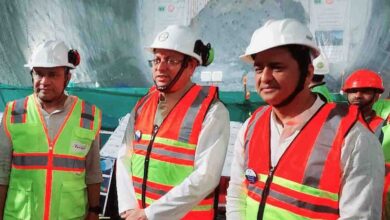Environmentalists support NGT’s accountability push, demand comprehensive reforms

Thursday, 08 August 2024 | Purnima Bisht | DEHRADUN
The National Green Tribunal (NGT) has recently castigated the Uttarakhand administration over their handling of safety and environmental issues at the Char Dham pilgrimage sites—Kedarnath, Badrinath, Yamunotri and Gangotri. The environmentalists opined that the NGT’s order highlights the critical need for Uttarakhand administration to reassess and strengthen their approach to manage the Char Dham pilgrimage. They said that effective waste management, clear guidelines for carrying capacity and robust disaster preparedness plans are essential to ensure the safety of pilgrims and the preservation of the region’s fragile ecosystem.
The NGT analysed the situation following a petition that highlighted the unregulated dumping of waste, including equine dung and carcasses, along the pilgrim tracks at Kedarnath, Hemkund Sahib, Yamunotri and Gomukh. The NGT’s bench questioned the State’s preparedness for managing mishaps due to the absence of a regulated carrying capacity for pilgrims. Despite a State government circular dated May 10, 2022, which set carrying capacities for each site—16,000 for Badrinath, 13,000 for Kedarnath, 8,000 for Gangotri, and 5,000 for Yamunotri—a subsequent circular on April 21, 2023, revoked these limits, leaving the sites without any official restrictions. The NGT has ordered the Uttarakhand’s secretary of Environment to appear virtually at the next hearing to clarify the State’s stance on mishap responsibility and compensation mechanisms in the absence of these capacities. This scrutiny accentuates the long-standing neglect by state authorities concerning the sensitive geographical conditions of the Char Dham sites.
The founder of the Dehradun-based Social Development for Communities (SDC) foundation Anoop Nautiyal also criticised the State’s development model as dangerously flawed. He emphasised that the authorities’ failure to implement concrete measures in these high-risk areas, such as Kedarnath—frequented by millions annually—reflects a fundamental disregard for safety and environmental sustainability.
Nautiyal opined that the state’s approach, which focuses on setting new records for pilgrim numbers rather than addressing underlying risks, is fundamentally flawed. He said, “The government should stop looking at pilgrim numbers as a ‘record’ as it is a fundamentally flawed approach. This perspective is short-sighted and contrary to the principles of responsible and sustainable tourism advocated by the NITI Aayog too. The Char Dhams are situated in ecologically delicate areas, particularly in Rudraprayag where Kedarnath is situated. Rudraprayag is among India’s most landslide-prone regions along with Tehri, as reported by the Landslide Atlas prepared by the National Remote Sensing Centre (NRSC) of ISRO. Still, nothing is being done to address the issue.” Nautiyal further stated that the current model of development is fraught with inherent risks and immediate caution is necessary. The government must shift its focus from merely increasing pilgrim numbers to addressing the crucial issues of environmental management and disaster preparedness. This way, the administration will have a better probability of handling the risk of disaster, he added.
The Padma Shri awardee and founder of Maiti Movement, Kalyan Singh Rawat also stressed on the need of making policies with stakeholders and people who actually know about Himalayas rather than those who have hardly visited it. He said, “People in administration have made Char Dhams a tourist spot. The administration needs to make policies considering ground realities along with people who are actually living there. People who have hardly visited the Himalayas cannot understand the issue and certainly cannot properly resolve it.” He added, “Uttarakhand is prone to disasters due its geography and ecology. Nobody can change that. However we can certainly prioritise these concerns and engage with all stakeholders to develop and implement sustainable solutions. Without significant changes, the ongoing neglect of these issues could lead to more severe environmental and safety challenges in the future.”






